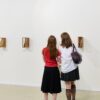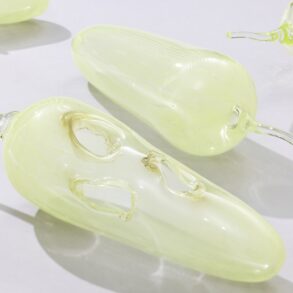A recent exhibition at Tate Britain in London titled ‘Now You See Us’ explores the life and contribution of women artists from Tudor times to World War One. The expansive exhibition that spans a journey of 400 years and includes over 100 works of art gives a glimpse into the struggles and challenges women have faced and the little triumphs that have led to women artists gaining their dues today.
After viewing this exhibition, several questions came across my mind concerning the many talented and seldom celebrated women artists of India. The biggest tragedy and disadvantage (which I encountered while documenting the Estate of Bhanu Athaiya for Prinseps Research) was the sheer lack of documentation and archiving. Since women artists were rarely given a spotlight during their lifetimes, they are also very poorly documented. Even prestigious institutions in India have very little to no information on the majority women artists and their contributions to Indian art history. Athaiya, for example, was the only woman artist to be part of the illustrious Progressive Artists Group (PAG).
Despite the lack of documentation, we have an Amrita Sher-Gil whose works have broken auction records. A domain where the majority of art works in the spotlight are by male artists, ‘The Story Teller’, painted by her in 1937, sold for a whopping Rs 61.8 crore in auction last year. I wonder how many talented female artists there must have been before her and after that continue to be forgotten.
Thankfully, a lot has changed for female artists today—equal opportunities, sales, diverse platforms to exhibit their works and hefty valuations. Anju Dodiya’s watercolour paintings are an epitome of expressiveness. Forging her own style over the years, her art has found a home across the globe with paintings being exhibited in prestigious exhibitions including this year’s Art Dubai and Art Basel.
Indian female artists are showcasing their works in leading institutions. Bharti Kher, a vocal feminist, is one of our leading artists who has created a name for herself internationally. She has exhibited her art across the globe with the ‘bindi’ being seen as a common feature in her paintings. I recall visiting her studio in Delhi, a beautifully designed and organised space with varied materials for works ranging from large canvases to sculptures. But what caught my attention were the many bindis. While one is only used to seeing a bindi as a decorative mark worn mainly by women on the middle of the forehead, there is a spiritual context to the embellishment. Believed to represent the third eye or the Ajna Chakra, Kher uses the bindi as a symbol to connect the real and the spiritual. A testimony to the spiritual depth of her art.
Last year, Delhi photographer Gauri Gill won the prestigious Prix Pictet Award and had her works exhibited at the recently opened Victoria and Albert Museum Photography Centre. Her photography, exploring a versatile range of subjects including culture, community, the deserts of Rajasthan, the farmer protests are visual documentations of the complexities of life.
Very few Indian photographers, let alone female photographers have garnered such success on an international platform.
I was enchanted by the recent piece of art created by contemporary artist Jayshri Burman. Art, which then found its way on the lehenga of Radhika Ambani during her nuptials. I recall seeing her goddess series for the first time at The Leela Palace in New Delhi. The hotel had just been redesigned. Amidst the grandiose and opulence of the design and decor were Burman’s artworks. Each work is a celebration of the divine feminine and the intersection between nature and womanhood. The bold use of colours, the many layers of textures, some inspired from nature itself make her artworks captivating, lyrical narratives.

Ashawari by Jayasri Burman
Similarly, Jayati Bose has explored the subject of goddess, of the female entity through her art. Exploring various mediums, her series of ‘Women in Leisure’ is my absolute favourite piece by her. There is a sense of calm, a celebration of oneself as women are seen enjoying themselves in these works. A group of women draped in white sarees, sipping chai and chatting, flying kites, simply having fun. There is joy in the little things, meaning in the mundane and beauty in the simplicity of these works.
Women artists are creating their own paths, be it through festivals, exhibitions and biennales, in auctions and gallery sales, museums, there is no great distinction based on gender. However, the larger victory is that women are leading throughout the art ecosystem. Not only as artists but even art collectors, gallerists, museum directors, curators, archivists. What this does allow, is room for diverse viewpoints and voices to be seen and heard.
Could these new narratives, this alternate gaze that we are privy to view, have an influence on society and culture as a whole?
This post was originally published on this site be sure to check out more of their content







